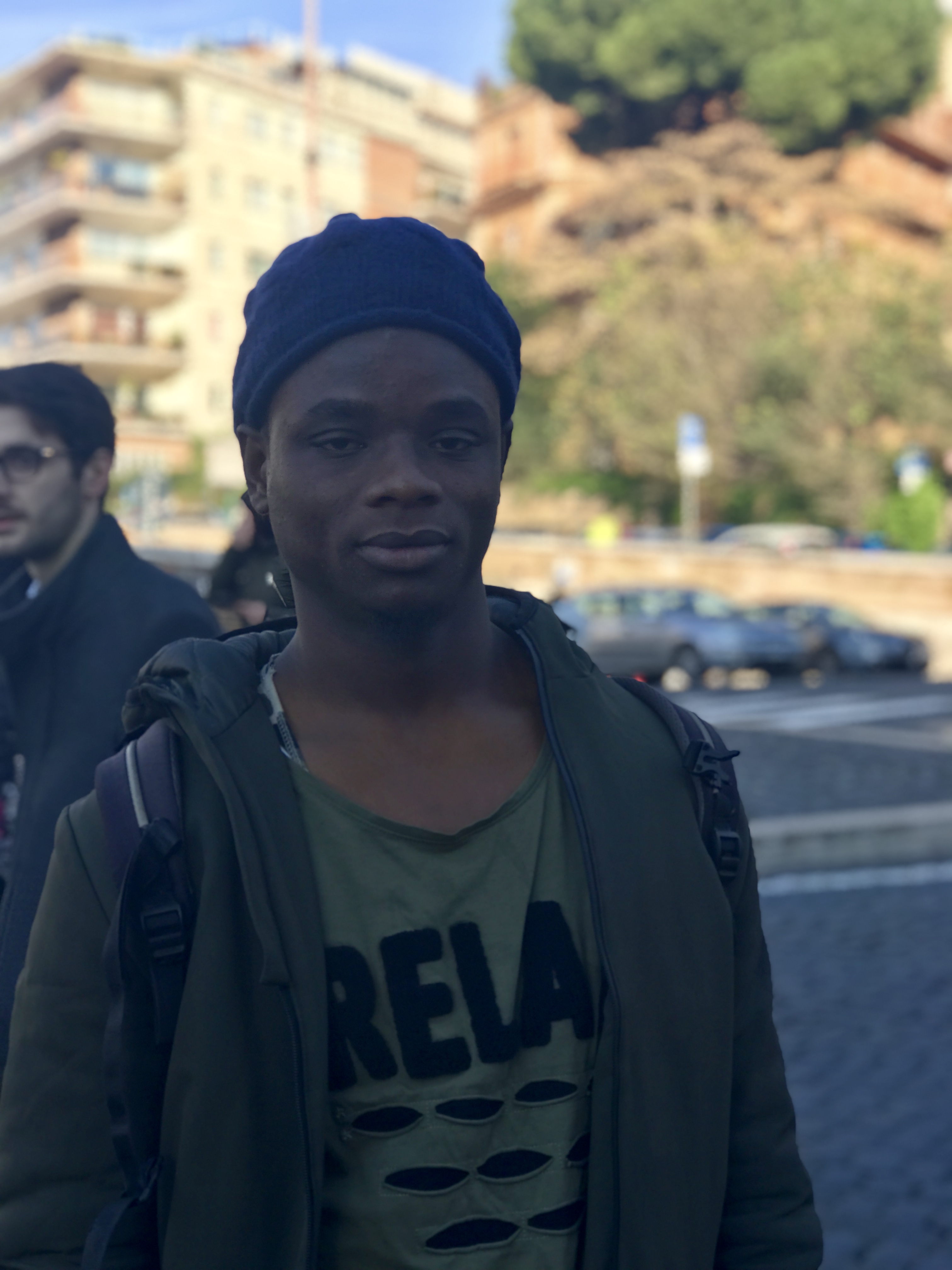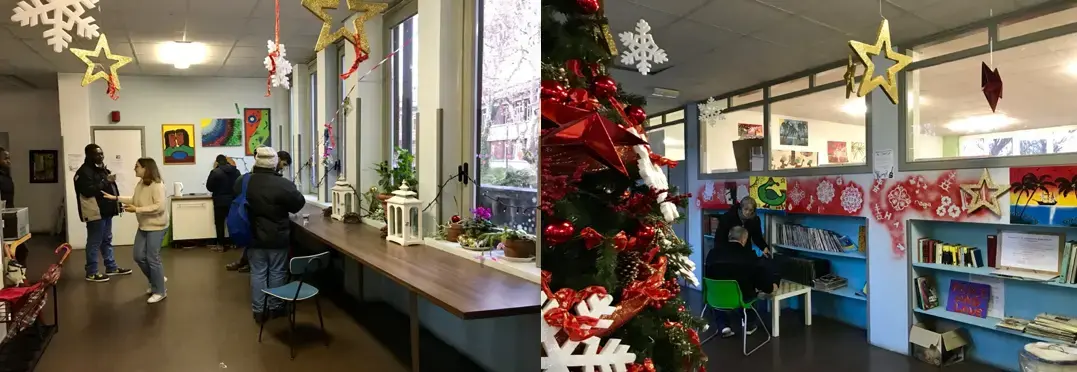
Ahma Sow lowers his weary eyes, barely perceptible in the bustling crowds of Rome, and describes the struggles he has faced since relocating. He is equal parts emotionally drained and physically disheveled. His body lags with layers of baggy clothing, flashing a bright smile despite his hollow expression.
Recently turned 20, Sow spends his days wandering the city streets, often feeling the desperation and utter hopelessness he reiterates is common among migrants and refugees in the country.
“I wanted to get a job, to send money to my family in Senegal. The boat ride here was terrible. But I’m here now, so not so bad. But I can’t find a job. I don’t even know what I would do, but I want to do something. And I don’t know where to turn to. I learned Italian, but they won’t hire me because I’m a ******. They don’t want any of us.”
He is one of 120,000 foreigners who arrived to Italy in 2017, as reported by the Italian National Institute of Statistics. An estimated 5 million foreign nationals are legally residing in Italy, as 8.3 percent of the country’s population, while another 500,000 are living in Italy illegally, including those who outstayed their visas or failed to obtain asylum status. As of 2018, there were 182,000 in asylum centers, an increase from 22,000 in 2013.
Sow’s struggles are not unique. Most foreign nationals are forced to grapple with unfamiliar settings, racial tensions, poor living conditions, and health challenges. Although the government’s anti-migrant stance has greatly reduced the number of foreign arrivals in recent years, inherent challenges in the structure and services of the arrival system remain unresolved.
In spite of these declining migration numbers due to policy and administrative changes, the legal, health, and integration assistance offered to migrants and refugees is not adequate for the demand that currently exists, caseworkers claim.
One such challenge is the psychological issues that many migrants and asylum seekers suffer from, including depression and PTSD. Mental-health disorders are characterized by “a combination of abnormal thoughts, perceptions, emotions, behaviors, and relationships with others,” according to the World Health Organization.
Médecins Sans Frontières (Doctors Without Borders) noted that 89 percent of travelers reported traumatic experiences prior to and during their journey to Italy, which range from witnessing violence and death to sexual assault. Once arrived at their destination, the Migration Policy Institute found that many migrants experience loneliness, boredom, fear of deportation, and worries about the future, exasperating mental health conditions as asylum processing drags on.
According to the EU Agency for Fundamental Rights, some asylum seekers are reluctant to undergo psychological assessments or attend therapy sessions, due to worries that a mental-health diagnosis would delay their asylum application or force their relocation to a special accommodation center. PTSD symptoms are often associated with inconsistent testimony or misrepresentation of certain situations.
Asylum law in the European Union recognizes the importance of providing mental-health care, though individual Member States are inundated by processing large numbers of asylum seekers and have difficulties detecting and treating these conditions.
While initial health screenings focus on physical disabilities and transmittable diseases, less-apparent, often-psychological vulnerabilities that migrants and asylum seekers suffer from frequently go undetected. This is due in large part to a number of practical barriers, including a lack of resources and insufficient numbers of mental health professionals, cultural mediators, and interpreters, which impede the standardized provision of these services.
The state has neither the bandwidth nor the resources to accommodate the underlying psychological issues and needs that plague migrants and asylum seekers, say non-profits focusing on foreigners needing assistance. Volunteer associations state that the Italian government lags behind in addressing mental health challenges, and while projects from public and private organizations attempt to fill the gaps, they cannot answer all demands.
Pscyhologists and volunteers agree that the public's perception, framed by the messaging promoted by the government, is that the influx of migrants and refugees is an emergency, threatening traditional values and norms.
“The government is in a state of ambiguity, with lots of public fights and protest,” says Dr. Nicola Petrocci, a Rome-based cognitive behavioral therapy psychotherapist and former Director of the Psycho-social Center for Immigrants and Refugees of the Identification and Expulsion Centre. “This is characteristic of the country and our economy as a whole. Migrants and asylum seekers are having a difficult time getting integrated with the current state of affairs. We need less government solutions reacting to constant emergencies and a greater focus on stable plans.”
Italian foreign nationals face a national rhetoric that describes them as invaders. This exacerbates their outsider status and the problems they have, from economics to mental health. And yet, while this national rhetoric reads one way, events on the ground in progressive cities such as Milan tell a different story.
Naga, a volunteer-based organization providing health and legal assistance for migrants in the southern municipality of Milan, emphasizes the need to understand cultural influences on foreigners’ adjustment to Italian society, as well as problems of mental health stigmatization.
The government recently eliminated integration activities from its budget, which included cutting the funding for Italian language classes in the reception for asylum seekers. The responsibility of supporting migrants seeking free assistance, cultural activities, and learning opportunities now falls to these NGOs and organizations like Naga. Several integration efforts attempt to mitigate the difficulties migrants face in coming to Italy. These local level practices that encourage assimilation into Italian society.

Naga offers free Italian classes, IT skills classes, music and art therapy, sports leagues, and a small library for migrants. Not only does Naga provide free healthcare for those who would otherwise be reluctant to visit a state-sponsored hospital, but it provides a sense of community for migrants during what is certainly a tumultuous time. Davide Biffi, an anthropologist at the center, looks at socialization and community building as a tool, while the other half of the organization’s focus is on medical and legal support. Naga Har–the organization's branch in southern Milan–receives around 1,000 new migrants and refugees each year, a majority of them males ranging from 18 to 35 years old. The top nationalities represented are from Sub-Saharan Africa and Central America.
Naga acts independent of political parties, institutions, trade unions, and religious organizations and lenders. The organization aims to become extinct when elected officials assume the direct and effective management of migrants and asylum seekers, and represent their rights thoroughly.
"An association does concrete things. We are neither a party nor a trade union and we must not replace missing pieces of state ... Volunteering must find new recipes, cover areas of shadow, experiment, practice and shed light on hidden phenomena ..." says Italo Siena, founder of Naga.
The strength of Naga and similar associations throughout Italy is the continuation of operations based solely on volunteer work. Motivated volunteers with different backgrounds undergo training, bringing a diverse array of experience and empathy to the crisis.
These psychological benefits are particularly important because mental health is culturally specific. Culturally specific aspects include incorporating social organization, religion, language, customs, values, and norms into innovative interventions to address the challenges many migrants and asylum seekers face, claims Dr. Petrocchi. Ethnopsychiatry, a new school of thought that is slowly emerging, refers to the practice of examining mental illnesses from a cross-cultural perspective. This requires a systematic overhaul of mental healthcare, far beyond the current capacity of projects attempting to solve these issues.
Additionally, culturally specific mental healthcare must consider the strong regional ties Italian natives have, and the juxtaposition between more progressive values in the North and traditional values in the South. Without such interventions currently in place, community associations’ integration and socialization efforts are the sole solution to the problems many migrants encounter.
Integration efforts are crucial to address mental healthcare at the local level. Many cultures exhibit a lack of trust in the health-care system and a lack of understanding of mental health, explaining why asylum seekers may choose to hide their suffering instead of seeking treatment. The early identification of mental-health disorders can decrease the risk of developing more severe conditions later on and helps avoid time-consuming administrative and judicial appeals.
It is not uncommon for migrants and refugees to exhibit a lack of trust, “because maybe they just talked with a lot of people trying to fix their situation and they were not able to help them, or they don't believe anyone about the possibility to improve their life condition. Unfortunately, in a lot of cases this is true, or a lot of time is needed for real improvement,” says Davide Iaccarino, an activist and member of the legal assistance team with Baoab Experience, a volunteer-based association in Rome that promotes human rights and offers legal and medical assistance to migrants.
The largest issue volunteer-based organizations currently encounter is in measuring practical outcomes. While many migrants who utilize these services speak to the value of them, but, without concrete, tangible benefits, there are limitations to their effectiveness.
Non-profit organizations need “a lot of time to get an answer from the police or from the court. It's difficult to say ‘you have to improve your Italian because maybe, one day, if you are lucky, if you don't get sick, you will be able to get a job because of these classes.’ A lot of them attend the courses because they really think they are doing something good for themselves… that's just what [they are] looking for: an opportunity to change their lives,” offers Iaccarino.
Migrants and refugees travel to Italy believing they can improve their lives and help their families. There exists an inherent paradox in this, as migrants often leave their country of origin to discover further difficulties waiting for them in Italy, compounded with mental health difficulties that will not be addressed.
Iaccarino of Baoab Experience reiterates the gravity of the situation, describing how the current system perpetuates a sense of chaos. Noting that the majority of asylum requests are not granted, many are fed for a few months, then kicked out of centers and residences, unsure of where to go or appeal. Without housing-- which is often unaffordable-- they will be rendered unable to look for a job, as most employers require housing. Their documents, generally two-year permits for humanitarian reasons, will soon expire, and asylum seekers will lose the permit without a job.
“The actual government just decided to eliminate the two year protection. So they will become invisible, living in squats, or bidonvilles in the South, dying in the countryside in winter or under the sun of August, working to get money that can't save, because everything will be needed for the food they need to survive. They will be slaves,” he explains.
Integration efforts are a small component of a larger dilemma. The lifeblood of this effort lies in its advocates, striving to create a more just, tolerant society. Many volunteers are former migrants themselves. Maria Cuomo of Naga emphasizes the need to put a sense of humanity in the system, arguing that providing assistance to migrants and asylum seekers is largely a political action.
She shrugs, “Volunteers do not provide their assistance simply because they are good people… they do it because that is what is just and fair. We fundamentally believe migrants and refugees deserve to be treated as humans.”








